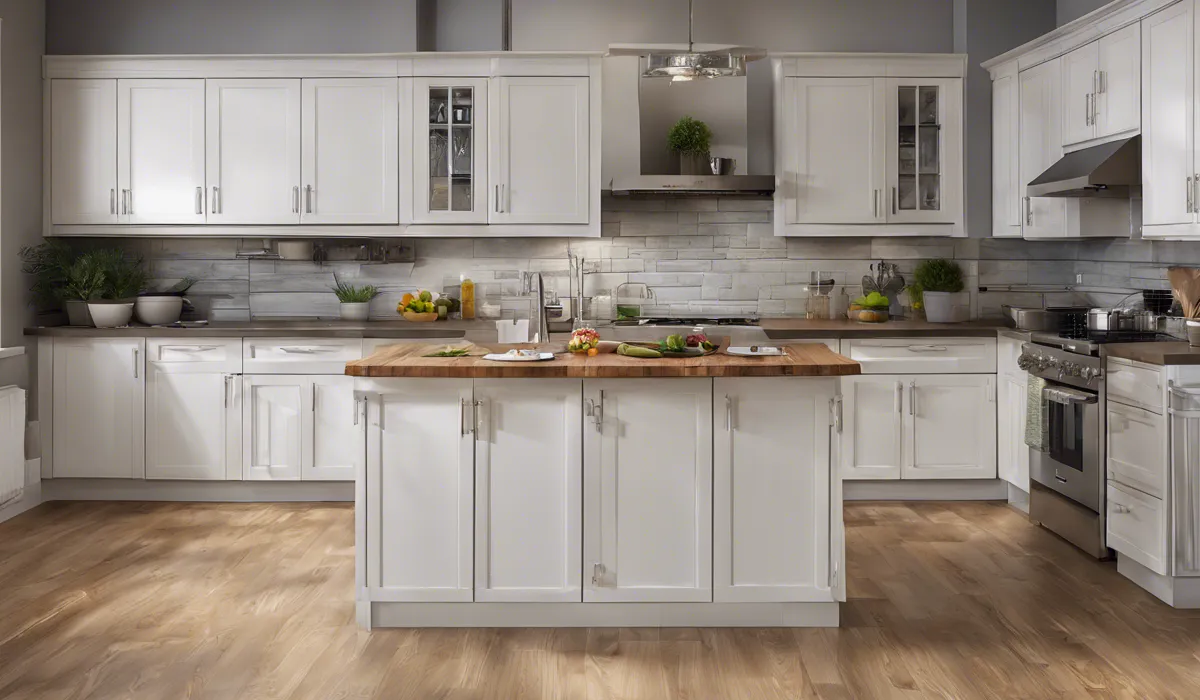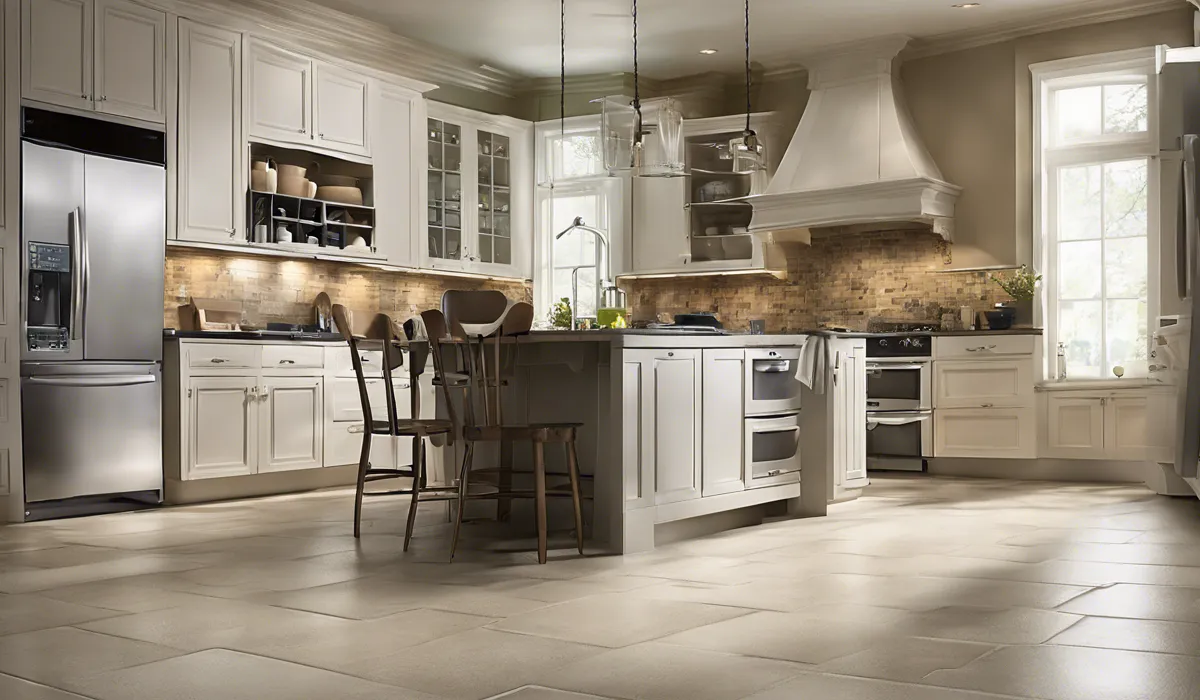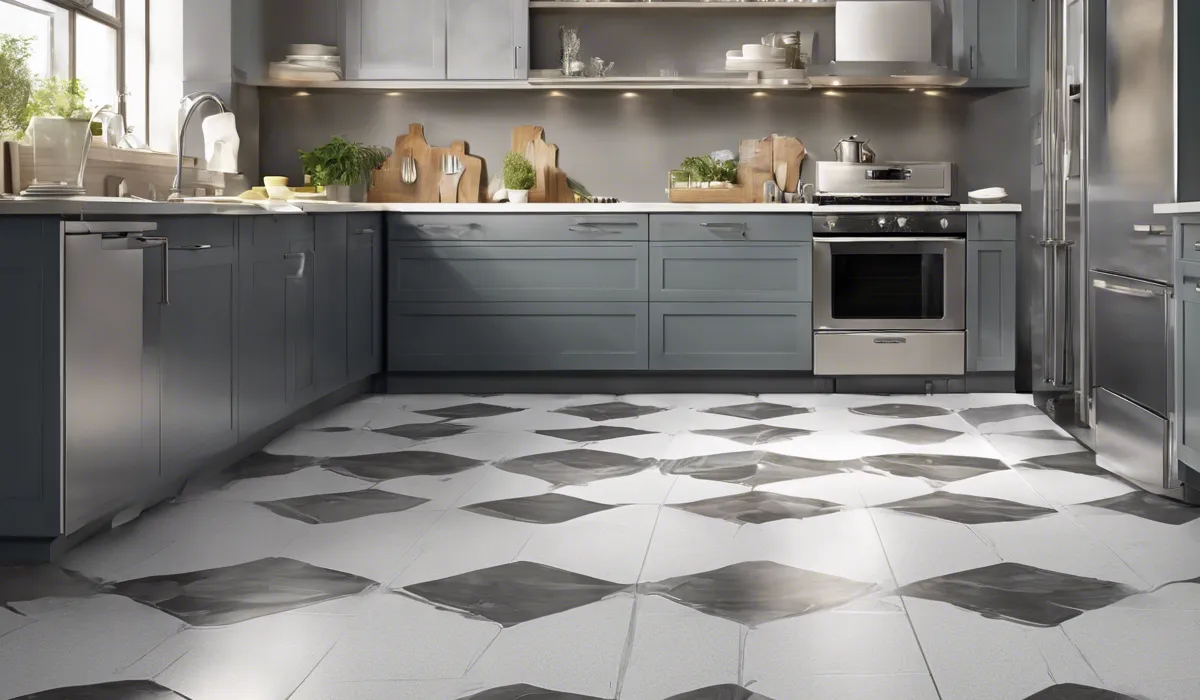Does Flooring Go Under Dishwasher? Install Tips Revealed!
Yes, flooring should extend under the dishwasher. This ensures a uniform level for all appliances and cabinets in the kitchen. It also facilitates easier dishwasher removal and replacement. However, make sure to leave enough clearance for the dishwasher to fit after the new flooring is installed.
The Importance of Proper Dishwasher Installation

Stabilizing Dishwashers with Correct Flooring
Flooring plays a crucial role in the stability of your dishwasher. A level and sturdy floor prevents the dishwasher from tilting, which can cause dishes to move during cycles and lead to potential breakage or ineffective cleaning.
When the flooring under a dishwasher is even and solid, it helps in distributing the weight of the appliance evenly, reducing strain on its components.
Leveling for Performance and Longevity
Ensuring your dishwasher is level is not just about stability; it’s about performance, too.
A dishwasher that isn’t level can lead to water pooling in certain areas, causing poor circulation and cleaning.
Over time, this can lead to unnecessary wear and tear, reducing the appliance’s longevity. Proper leveling helps to ensure that all moving parts work as they should and that water drains correctly after each wash cycle.
Preventing Water Damage and Mold
Improper installation can lead to water leaks, which over time can damage your flooring and even lead to mold growth.
Ensuring that the flooring under your dishwasher is properly sealed and protected is crucial in preventing such issues.
A well-installed floor under your dishwasher acts as a barrier against moisture, keeping your kitchen safe from the risks of water damage and mold.
Flooring Options and Installation Techniques for Under Dishwashers

Diverse Flooring Materials
There are various flooring options to consider for under your dishwasher, such as tile, hardwood, and laminate.
Each material has its benefits and drawbacks. For instance, tile is highly water-resistant and durable, making it an excellent option for under a dishwasher.
Hardwood can offer a seamless look throughout your kitchen but may require additional waterproofing measures. Laminate is cost-effective and easy to install, but it’s less durable when exposed to moisture over long periods.
Pros and Cons of Flooring Under Dishwashers
Running flooring under the dishwasher creates a cohesive look and makes appliance removal and replacement easier.
However, it also means that you have to be thoughtful about the height of your dishwasher niche to ensure that the appliance can be removed without having to tear up flooring if service is needed.
Installing Flooring Under a Dishwasher
When installing flooring under a dishwasher, start by measuring the area accurately. Ensure you have enough clearance for the dishwasher legs to be adjusted.
Cut the flooring material to fit and lay it down carefully, making sure it’s level. It’s also important to leave a small expansion gap around the edges to allow for material swelling with changes in humidity.
Waterproofing and Floor Protection
Waterproofing is essential to protect your new flooring. Use a quality sealant around the edges and where the flooring meets the dishwasher. Consider adding a waterproof mat or pan under the dishwasher for added protection against leaks.
Troubleshooting and Maintenance for Dishwashers with Underlying Flooring

Accessing and Repairing Dishwashers
If you need to repair your dishwasher and there’s flooring underneath, you should be able to do so without issue if proper clearance was left during installation. In some cases, you might need to adjust the dishwasher’s feet to remove it from its space.
Always refer to the manufacturer’s instructions for guidance on accessing and servicing your appliance.
Maintaining the Dishwasher Area
Regular checks for leaks, moisture, or signs of damage can help maintain the area under your dishwasher.
Clean any spills immediately and inspect the dishwasher hoses and connections periodically to ensure they are intact and secure. This preventative maintenance helps in avoiding water damage to the flooring below.
Dealing with Water Damage or Flooring Issues
If you notice water damage or issues with the flooring around your dishwasher, it’s important to address them promptly.
Stop using the dishwasher, turn off the water supply, and call a professional if necessary. Depending on the extent of the damage, you may need to replace the affected flooring to prevent further problems.
FAQs About Flooring Installation Under Dishwashers
Should flooring be installed under a dishwasher?
Yes, flooring should extend under the dishwasher to ensure a uniform level for all appliances and cabinets in the kitchen.
Does having flooring under a dishwasher help with appliance removal?
Yes, installing flooring under a dishwasher facilitates easier removal and replacement of the appliance.
What should be considered when installing flooring under a dishwasher?
It’s important to leave enough clearance for the dishwasher to fit after the new flooring is installed.
Can you replace a dishwasher without removing the flooring underneath?
Typically, you can replace a dishwasher without removing the flooring underneath, as long as there is sufficient clearance.
What happens if you don’t put flooring under a dishwasher?
If flooring is not installed under a dishwasher, it may result in uneven appliance height and potential complications with dishwasher removal in the future.
Final Thoughts
Flooring should indeed extend beneath the dishwasher to maintain a consistent level across kitchen appliances and cabinetry.
This not only contributes to a cohesive aesthetic but also simplifies the process of dishwasher removal and installation. It’s crucial, though, to ensure sufficient space is available for the dishwasher once the new flooring is in place.





